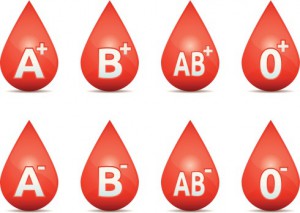Stress—even the word alone can make you tense up a bit or set off a chain reaction of things that constantly keep your mind going. Some people may handle their stress more effectively or recover from stressful events quicker than others. We hear a lot of sayings about not worrying about the things we cannot control and not sweating the small stuff but, the fact remains, everyone feels stressed from time to time.
How often have you daydreamed of being an adult as a kid? When we’re younger we envy the freedom to do what we want as adults but, once we become adults we begin to miss the freedom of being a kid and not having to do too much. As an adult we have to cater to responsibilities, work to pay bills, meet deadlines, sometimes raise children and provide for our families. All of these things if not managed properly can lead to stress.
Prolonged exposure to stress can result in a decline in mental health. There at least three different types of stress, all of which carry physical and mental health risks:
- Routine stress related to the pressures of work, family and other routine responsibilities
- Stress caused by a sudden negative change such as, losing a job, past due bills, or illness
- Traumatic stress from an event like a major accident, war, or assault
Stress that continues without relief can lead to a condition called distress — a negative stress reaction. Distress can lead to physical symptoms including headaches, upset stomach, elevated blood pressure, chest pain, and problems sleeping. Research suggests that stress also can bring on or worsen certain symptoms or diseases. The effects of stress usually build up over time. Taking practical measures to maintain your health and outlook can reduce or prevent these effects.
Managing your time is an important part of keeping your stress levels low. The following are some tips that may help you to cope with stress:
- Talk about your problems to friends, family for emotional support or write them down in a journal. Sometimes releasing our problems helps us to deal with them.
- Recognize signs of your body’s response to stress, such as trouble sleeping, increased alcohol intake or substance abuse, feeling depressed, having low energy, and being short-tempered.
- Exercise regularly. A short walk can help boost your mood and reduce stress.
- Set your priorities in order of importance and know when to say no when your tasks begin piling up.
- Schedule regular times for healthy and relaxing activities.
- Explore stress coping techniques like yoga, meditation or other gentle exercises.
- Avoid dwelling on problems. Take note of all that you have accomplished without focusing on what you haven’t been able to complete yet.
- Breathing exercises when you feel yourself becoming tense
All content of this newsletter is intended for general information purposes only and is not intended or implied to be a substitute for professional medical advice, diagnosis or treatment. Please consult a medical professional before adopting any of the suggestions on this page. You must never disregard professional medical advice or delay seeking medical treatment based upon any content of this newsletter. PROMPTLY CONSULT YOUR PHYSICIAN OR CALL 911 IF YOU BELIEVE YOU HAVE A MEDICAL EMERGENCY.



